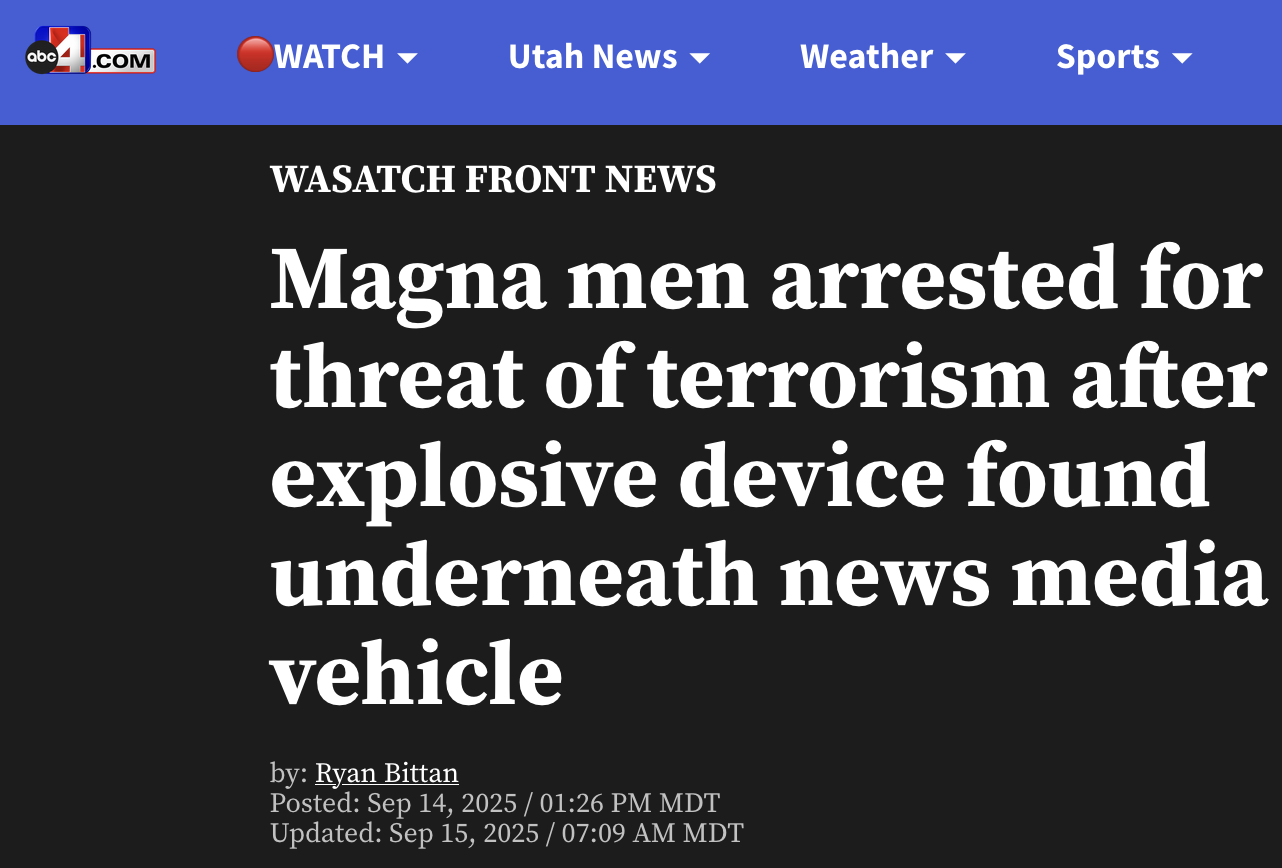
Two Arrested After Device Found Under News Media Vehicle
MAGNA, Utah — Federal agents arrested two men in Utah after an incendiary device was discovered beneath a news media vehicle in Salt Lake City, as reported yesterday by Salt Lake City's ABC4 KTVX News. The device, which had been lit but failed to function, prompted evacuations and a federal terrorism investigation.
The incident underscores a troubling reality: journalists in the United States are now exposed to the kinds of improvised weapons once associated mainly with overseas conflict zones. Understanding the difference between an improvised incendiary device (IID) and an improvised explosive device (IED) is critical for recognizing threats and staying safe.
As ABC4 reported, Police and bomb squad units responded Sept. 12 after a suspicious device was found under a parked media vehicle beside an occupied building. Investigators confirmed the object was a working incendiary device. Two suspects, Adeeb Nasir, 58, and Adil Justice Ahmed Nasir, 31, were later arrested at their home in Magna, where law enforcement found additional devices, firearms and narcotics. Both men face multiple felony charges, including manufacturing weapons of mass destruction and making terroristic threats.
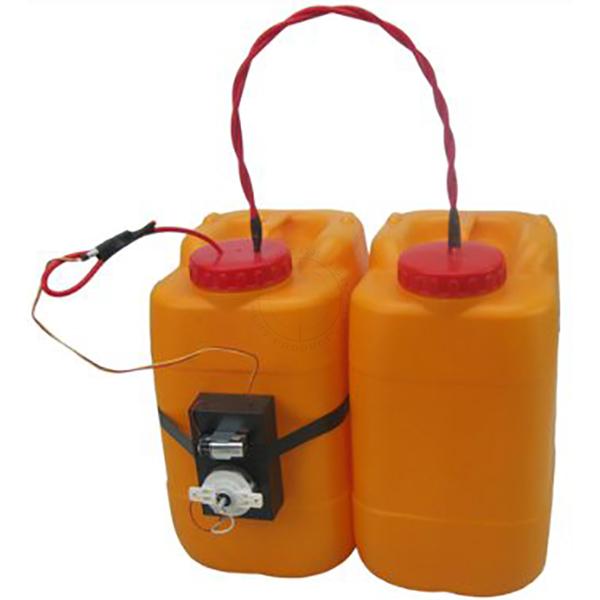
An inert replica of an improvised incendary device.
An improvised destructive device, or IDD, is any makeshift weapon designed to cause damage, injury or death through explosive, incendiary or chemical means. Unlike conventional military munitions, these devices are assembled from readily available materials and improvised components. IDDs usually contain a few common parts. These components may be visible or encased within the device, but most follow the same basic structure:
Power source – The stored energy, often a battery or similar supply, that allows the rest of the components to function.
Switch– The control mechanism that connects the power source to the device. The switch determines when the device activates.
Initiator– The part that receives energy from the power source through the switch. Its role is to ignite or set off the main fill.
Fill– The destructive material, whether explosive, incendiary or chemical. This is what causes damage once triggered.
Container– The outer shell that holds the device together. It conceals the contents and may influence how the force, fire or chemical spreads.
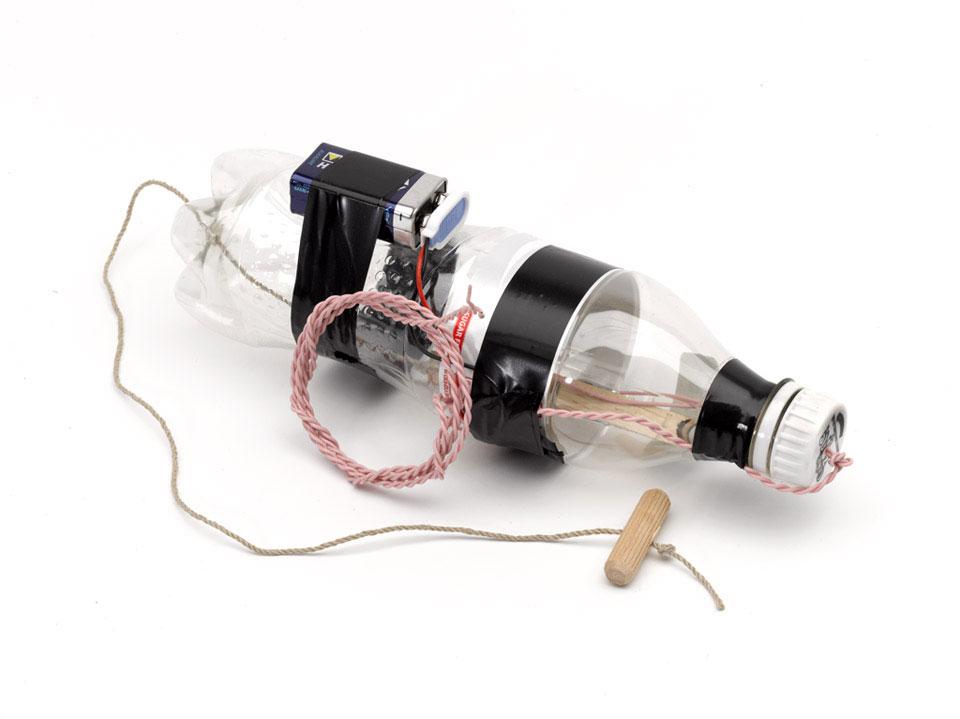
An inert replica of an improvised incendary device.
Improvised Incendiary Devices (IIDs)
· Designed to ignite fires using flammable liquids or accelerants.
· Built from common household materials such as bottles or cans.
· Cause damage primarily through fire and smoke.
Improvised Explosive Devices (IEDs)
· Homemade bombs that detonate with blast force and shrapnel.
· Require explosive compounds and triggering mechanisms.
· Cause destruction through pressure waves and fragmentation.
· More complex and often deadlier than IIDs.
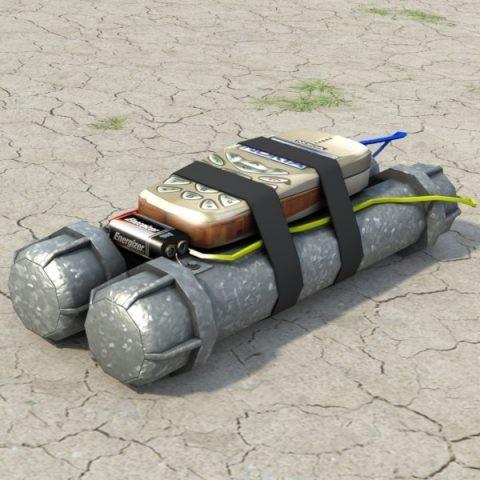
An inert replica of an improvised explosive device.
According to a Department of Homeland Security report on terrorist use of incendiary devices, IIDs can be particularly dangerous because they are easy to construct, often go undetected until deployed, and are capable of causing extensive property damage, panic and potential mass casualties. Their simplicity and availability of materials make them attractive to individuals intent on targeting symbolic locations or vehicles, including media outlets.
The improvised explosive device remains the most commonly used weapon by terrorists worldwide. They can be hidden in vehicles, backpacks, roadside containers or even worn on the body, and are capable of creating mass casualties, widespread fear and disruption of critical services. Their adaptability and ease of concealment make them a persistent hazard not only in conflict zones but also in domestic environments where journalists may be present.
Journalists and first responders should not attempt to identify or understand how a device works. The key is to recognize that these components may be present, treat the object as a potential hazard, evacuate the area and alert the proper authorities.
The placement of the device under a news vehicle appears to be a deliberate effort to threaten or harm reporters. Even when such devices fail to function, they cause disruption, obstruct safe movement and increase risks for media professionals. The discovery of additional hoax devices at the suspects’ home highlights the danger that journalists may face from both real and simulated threats designed to intimidate or silence coverage. The facts of this event are still under investigation, and either type of device — incendiary or explosive — can cause devastating harm.
Journalists can reduce risk by practicing strong situational awareness. Staying alert to surroundings, watching for suspicious packages or behavior, and regularly checking vehicles and equipment can provide critical warning before a hazard becomes deadly. Maintaining awareness not only helps spot potential threats but also ensures faster, safer responses when danger arises.
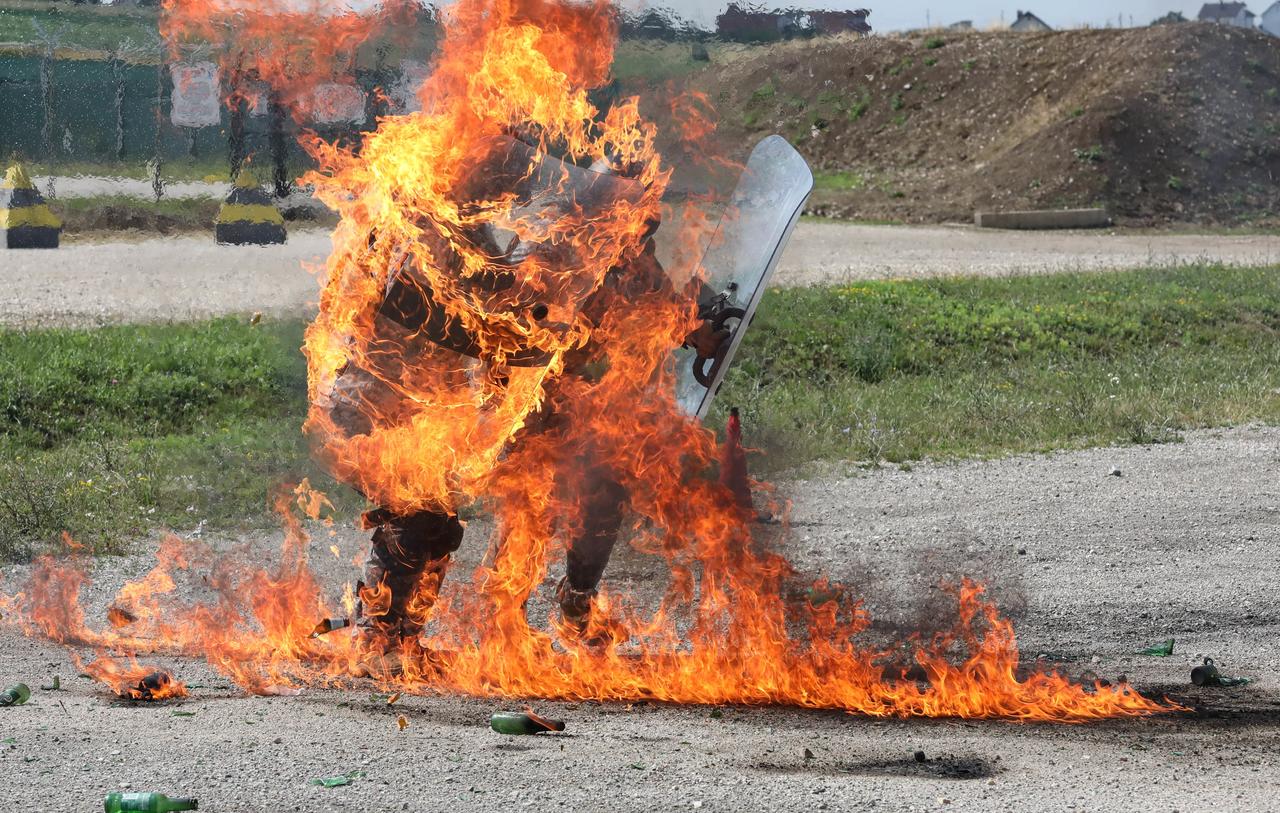
The effect of an improvised incendiary device is demonstrated during a US Army trainining senario, June 18, 2022. (U.S. Army National Guard photo by Sgt. Alexander Hellmann)
Improvised devices, whether incendiary or explosive, are no longer limited to distant war zones. For journalists working in American cities, the Utah case is a reminder to remain alert to suspicious objects, respect law enforcement perimeters and prioritize safety while continuing to report vital stories.
About the Author
This report was authored by Bryan Woolston, managing director of Crisis Ready Media. Woolston is a photojournalist with more than a decade of experience covering breaking news, politics and conflict for major international outlets. He served 20 years in the U.S. Army as an infantryman and Explosive Ordnance Disposal technician. He received extensive training and has operational experience in identifying, rendering safe and disposing of explosive hazards, including improvised explosive devices, and chemical, biological and radiological threats. He brings both frontline military expertise and newsroom perspective to the subject of explosive hazards and journalist safety.
